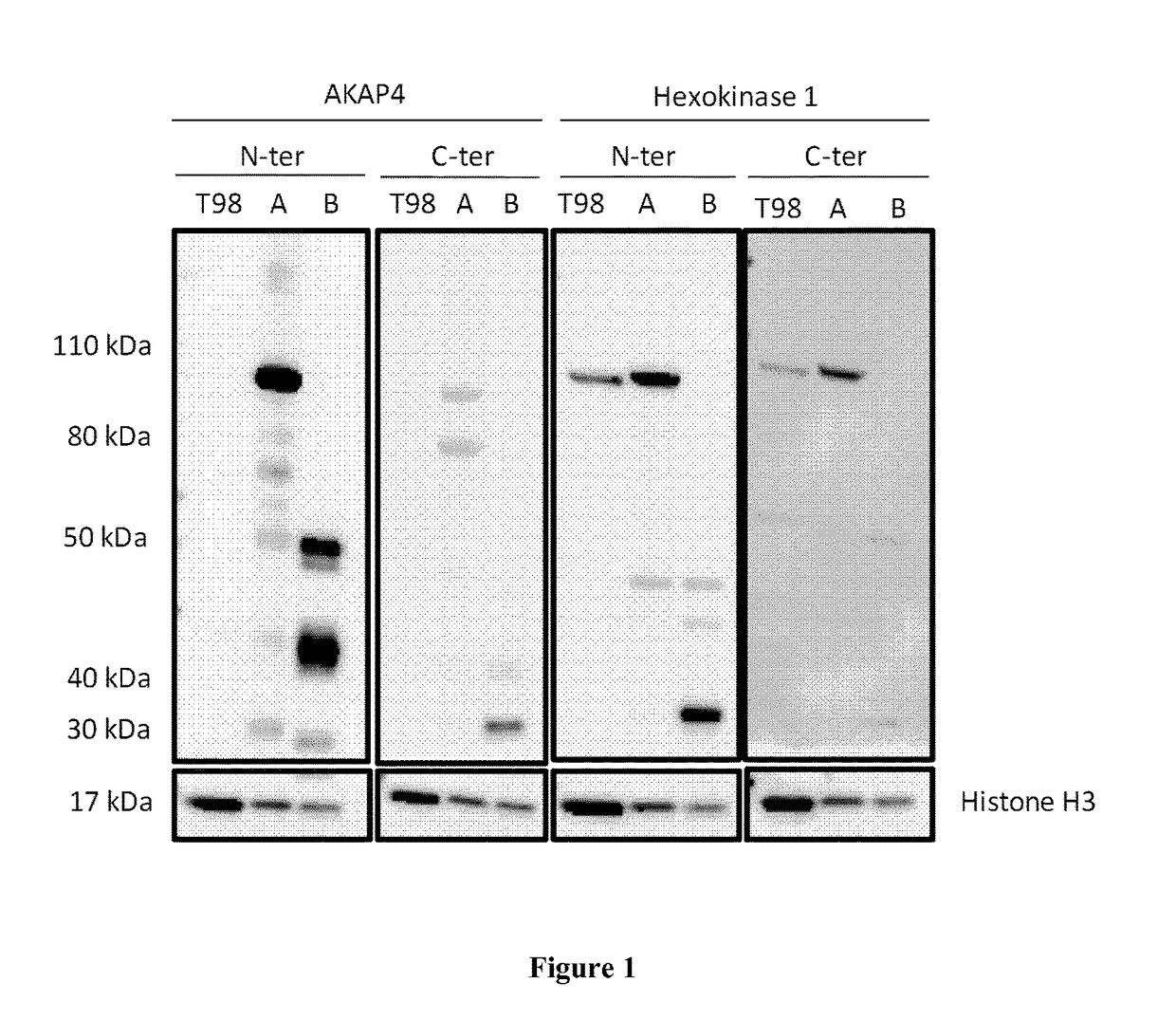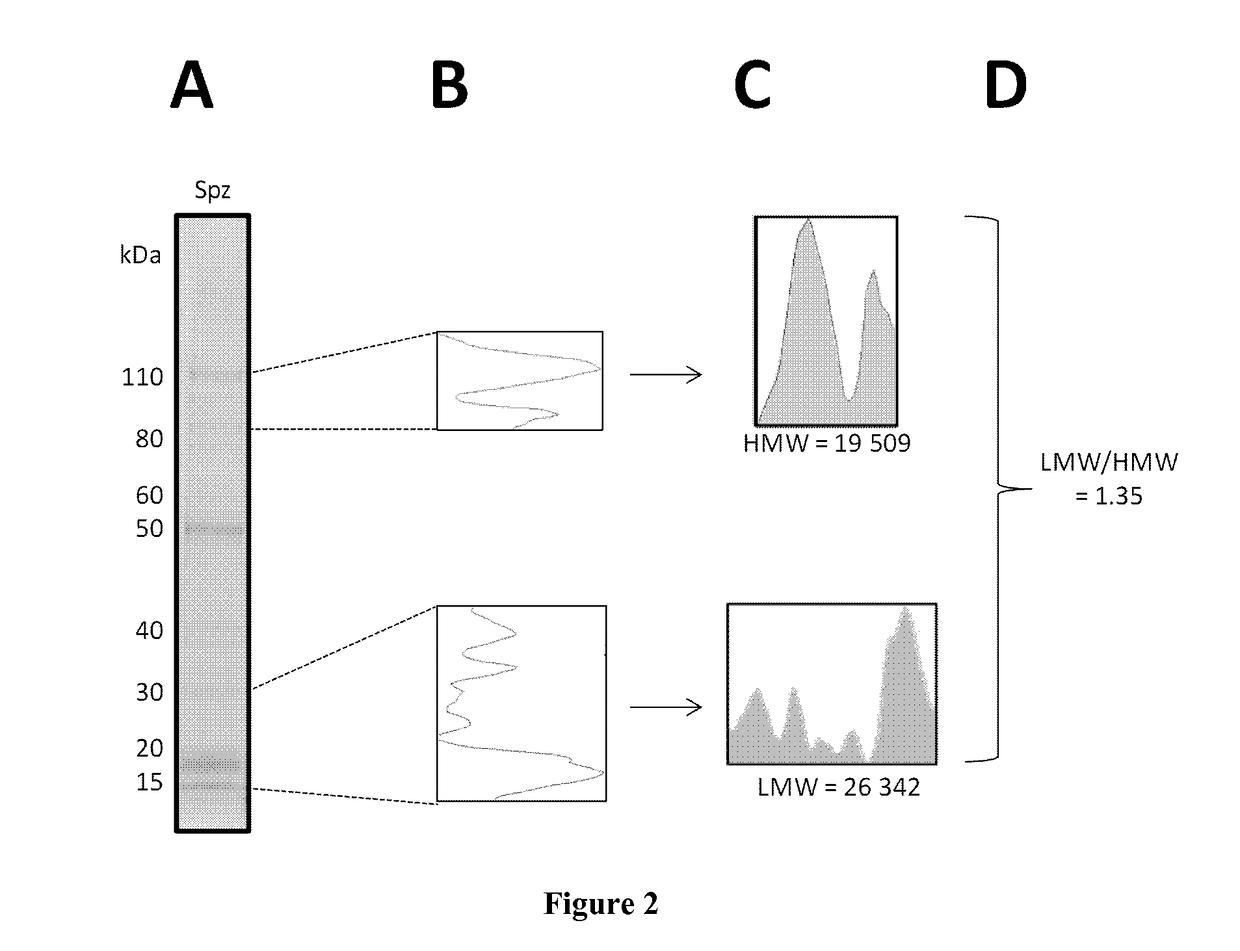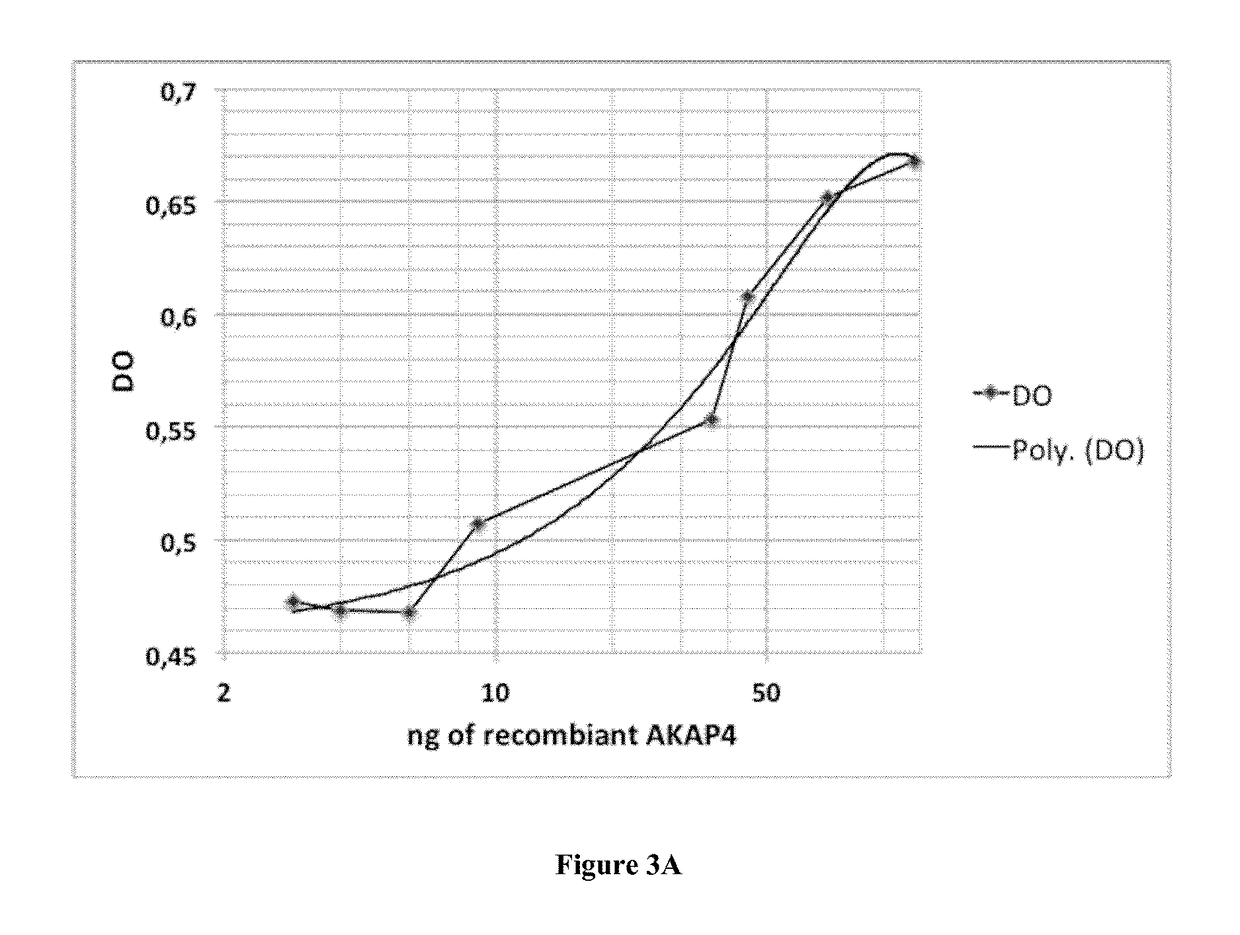Methods for determining human sperm quality
a human sperm and quality technology, applied in the field of reproductive medicine, can solve the problems of yet observed failure of fertilization and remains ill-defined
- Summary
- Abstract
- Description
- Claims
- Application Information
AI Technical Summary
Benefits of technology
Problems solved by technology
Method used
Image
Examples
example 1
[0068]Material & Methods
[0069]Semen and Semen Quality Assessment
[0070]Human semen samples were collected from anonymous men who attended the infertility department (Lille University center hospital). The semen were obtained between 3 and 5 days of sexual abstinence following masturbation and allowed to liquefy 30 min at 37° C. After liquefaction, the semen parameters (volume, pH, cell counting and motility) were evaluated according to the WHO criteria 2010. Spermatozoa were diluted ( 1 / 20) in Ringer medium and counted with an hemocytometer (Malassez cell counting). The progressive motility was evaluated by light microscopy on 5 fields and 100 spermatozoa were observed. The progressive motility (PR) is defined by the number of spermatozoa cells moving actively, either linearly or in a large circle, regardless of speed (World Health Organization 2010). The sperm morphology characterization (spermocytogram) was performed after Schorr's staining Only sperm above the lower references lim...
example 2
Comparison of IIU Outcome Variables According to the Groups A and B
[0122]The proteolyzed profile (group B) is indicative of a bad prognosis and bad sperm quality. The group B is associated with bad indicators such as higher number of biochemical pregnancy, abortion (miscarriage) than group A (Table 5).
[0123]
TABLE 4Sperm parameters of semen samples according to the groups A (1D-SDSPAGE, non-proteolyzed proteome) and B (proteolyzed proteome)Group AGroup BWHO 2010(mean ± SD)(mean ± SD)recomman-n = 37n = 38pdationsVolume (ml)3.5 ± 1.13.6 ± 1 NS>1.5Sperm count 110 ± 60.2108.1 ± 74.6 NS>15(×106 / mL)Sperm count369.8399.4NS>39(×106 / ejac)Ratio sperm count 0.3 0.3NS / (mL / ejac)Progressive motility54.2 ± 9.7 49.1 ± 11.30.03>32(a + b)(%)Normal morphology36.9 ± 14 34.4 ± 12.2NS15(%)MAI1.6 ± 0.11.6 ± 0.2NSmL, millilitter;ejac, ejaculation;MAI, multiple abnormalities index;NS, non significant;WHO, world health organization
[0124]
TABLE 5Comparison of IIU outcome variablesaccording to the groups A and B...
example 3
Comparison of IVF / ICSI Outcome Variables According to the Groups A and B
[0125]The group A is significantly associated with a higher embryo quality, embryo implantation, pregnancy and delivery than the group B (Table 7).
[0126]
TABLE 6Sperm parameters of semen samplesaccording to the groups A and BGroup AGroup BWHO 2010(mean ± SD)(mean ± SD)recomman-n = 38n = 35pdationsVolume (mL) 4 ± 1.83.7 ± 1 NS>1.5Sperm count105.4 ± 75.5 92.8 ± 67.2NS>15(×106 / mL)Sperm count 404 ± 352.4 335 ± 258.3NS>39(×106 / ejac)Ratio sperm count0.3 ± 0.10.3 ± 0.1NS / (mL / ejac)Progressive motility52.5 ± 10 47.7 ± 15.6NS>32(a + b) (%)Normal morphology35.2 ± 11.332.4 ± 15.4NS15(%)MAI1.6 ± 0.11.6 ± 0.2NSmL, millilitter;ejac, ejaculation;MAI, multiple abnormalities index;NS, non significant;WHO, world health organization
[0127]
TABLE 7Comparison of IVF / ICSI outcome variablesaccording to the groups A and BGroup AGroup B(mean ± SD)(mean ± SD)n = 38n = 35pPatient age (yrs)34.1 ± 4.8 36.2 ± 6 NSPartner age (yrs)30.3 ± 3.8 33....
PUM
| Property | Measurement | Unit |
|---|---|---|
| v/v | aaaaa | aaaaa |
| flow rate | aaaaa | aaaaa |
| voltage | aaaaa | aaaaa |
Abstract
Description
Claims
Application Information
 Login to View More
Login to View More - R&D
- Intellectual Property
- Life Sciences
- Materials
- Tech Scout
- Unparalleled Data Quality
- Higher Quality Content
- 60% Fewer Hallucinations
Browse by: Latest US Patents, China's latest patents, Technical Efficacy Thesaurus, Application Domain, Technology Topic, Popular Technical Reports.
© 2025 PatSnap. All rights reserved.Legal|Privacy policy|Modern Slavery Act Transparency Statement|Sitemap|About US| Contact US: help@patsnap.com



